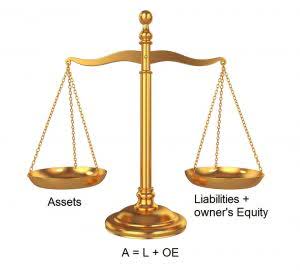
Liabilities are listed on your company’s balance sheet and directly impact your business’s assets and equity. There are several types of liabilities, and understanding each one is essential for assessing your business’s financial health and managing future cash flow. Over the policy year, the prepaid insurance is systematically expensed, reflecting the insurance coverage consumed. An upfront payment for a year’s access is a prepaid expense, gradually expensed as the software is utilized. The same logic applies to advertising campaigns paid in advance. The advertising value is consumed contra asset account over time, reducing the prepaid advertising asset and increasing advertising expense.
What else is included in our accountancy packages?

If, on Dec. 31, the company’s income statement recognizes only the salary payments that have been made, the accrued expenses from the employees’ services for December will be omitted. Expenses are an essential component of a company’s income statement. They represent the costs incurred by a business during its normal operations to generate revenue. Expenses can be categorized into various types, such as cost of goods sold, operating expenses, and non-operating expenses. Understanding how liabilities and expenses affect financial statements is crucial for accurate reporting. Liabilities are recorded on the balance sheet and impact assets and equity.
How to account for liabilities
Labor costs that are directly related to the production of a business’s primary goods or service are included in Cost of Goods Sold, which are not part of operating expenses. Operating expenses are represented on a balance sheet as a liability. Because they are a financial expense that does not directly contribute to selling services or products, they aren’t considered assets. It’s important to distinguish between operating and non-operating expenses when filing your business taxes. The Internal Revenue Service allows businesses to deduct most operating expenses that are necessary for business operations.

Are expenses liabilities?
Long-term liabilities, or non-current liabilities, are typically mortgages or loans used to purchase or maintain fixed assets, and are paid off in years instead of months. Current liabilities are usually paid with current assets; i.e. the money in the company’s checking account. A company’s working capital is the difference between its current assets and current liabilities. Managing short-term debt and having adequate working capital is vital to a company’s long-term success. FreshBooks expense tracking software can help businesses efficiently track and categorize their operating expenses, such as rent, utilities, insurance, and travel expenses.
Two foundational concepts are expenses and liabilities, which are frequently used but represent different aspects of a company’s financial activities. Liabilities are recognized when an obligation is created that will require payment in the future. For example, if you receive a bill from the electric company on June 1, that’s considered a liability because it’s recorded in accounts payable. Once the bill is paid, it becomes an expense on the income statement and the liability is removed. Liabilities are one of 3 accounting categories recorded on a balance sheet, along with assets and equity.

Which category of taxes comes in – a liability or an expense?
- Non-current liabilities are long-term obligations that extend beyond a year, such as bonds payable or long-term leases.
- The systematic recognition of prepaid expenses on the income statement reflects the gradual consumption of the future economic benefit.
- In this case, the company has successfully generated a profit of $30,000 after covering its expenses.
- If a contingent liability is only possible, or if the amount cannot be estimated, then it is (at most) only noted in the disclosures that accompany the financial statements.
- They are shown on a company’s monthly income statement to determine the company’s net income.
- Tracking expenses can help with budgeting and tax deductions and provide an overview of your finances.
Companies can give a breakdown of their revenues and expenses on their income statements. Accountants use any of the two methods to record expenses, that is, the cash basis and the accrual basis. Under the cash basis accounting, expenses are recorded when they are paid. On an accrual basis, on the other hand, expenses are recorded when they are incurred.
- Advertising is the amount a company incurs to promote its products, brands, and image via television, radio, magazines, Internet, etc.
- There are times when company owners must invest their own money into the company.
- In simple terms, having a liability means that you owe something to somebody else.
- Get ready for a rollercoaster ride of accounting adventures that will make your financial statements sing.
Are accrued expenses current liabilities?
A technology company spends $10 million annually on research and development (R&D). However, this investment may lead to innovations that generate future revenue. On the other hand, strategic use of liabilities can foster growth.
- Salaries payable is calculated by determining the amount of gross salaries earned by employees between the last payday and the end of the accounting period.
- Furthermore, classifying prepaid expenses as assets provides a more accurate picture of a company’s financial position.
- Examples of contingent liabilities are the outcome of a lawsuit, a government investigation, or the threat of expropriation.
- The accounting treatment is the same; both are compensation expenses, and unpaid portions create liabilities.
- Common examples include employee salaries, rent, utility bills, and marketing campaigns.
Income tax payable is a liability account that is shown on the balance sheet. You use it to record any income tax amount that you owe but have not yet paid to the appropriate taxing authority. When you do your adjusting entry each period and debit income tax expense, you will credit income tax payable. In terms of liability vs. expense accounts, Accounts Payable Management a liability refers to a financial obligation, or upcoming duty to pay.
Understanding Financial Statements
- For instance, a company is unable to afford to pay cash to purchase its monthly office supplies.
- The expenses are recorded in the accounting period in which they are incurred.
- On the income statement for the month the electricity was used, “Utilities Expense” would be listed, likely under the category of Selling, General, & Administrative (SG&A) expenses.
- Ultimately, expenses reduce the company’s net income, which is the final figure after all revenues and expenses have been accounted for.
- There are a few key differences between liabilities and expenses, and knowing what they are can help ensure you’re making smart business decisions—now and in the future.
Remember, debts (maturing within 1 year or less) will also come under current liabilities. Liabilities get a special position are expenses a liability in the balance sheet as well as in the financial statement. These are obligations or some sort of debt that a business must pay in the future. These obligations can arise from the services the business received but not paid for, or any kind of loan, etc.
